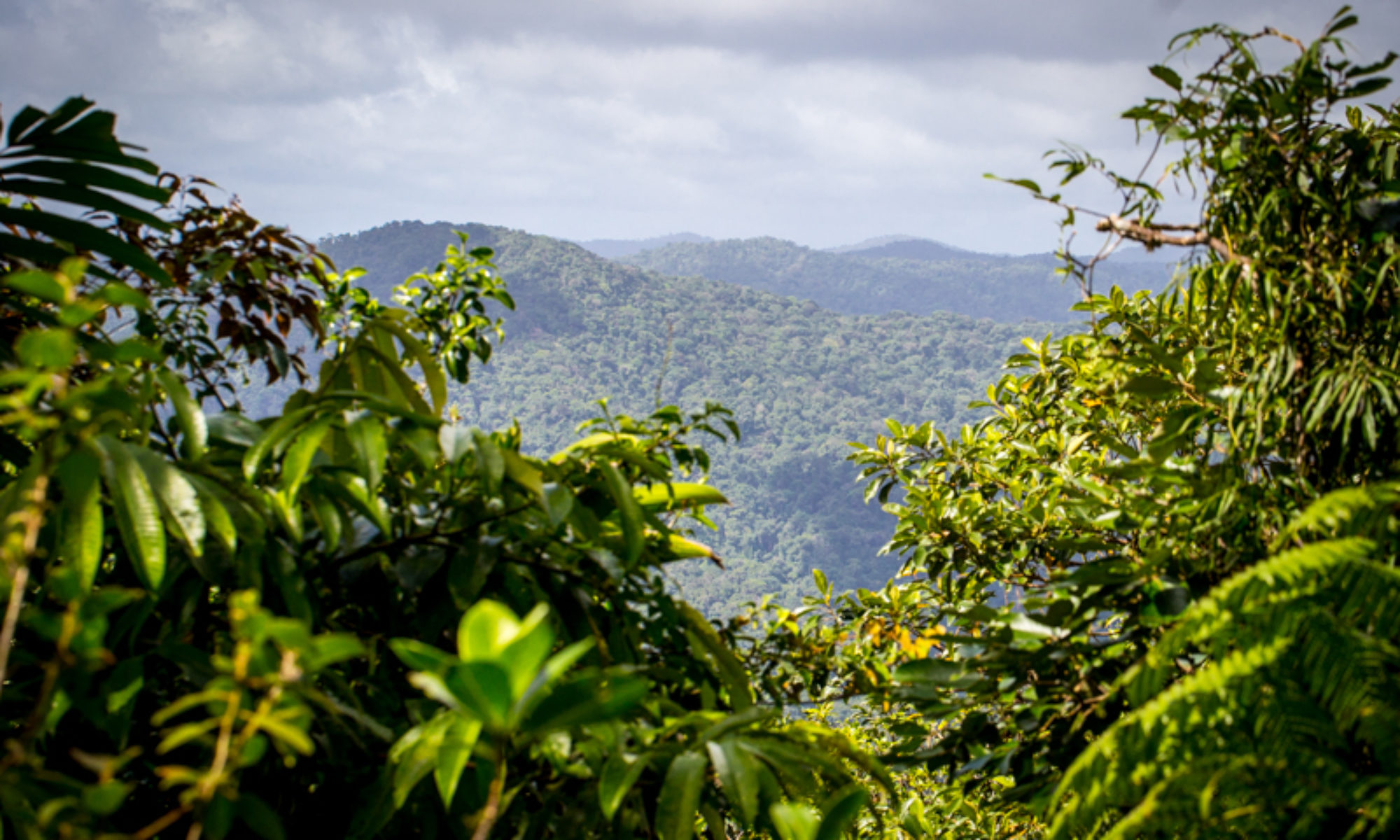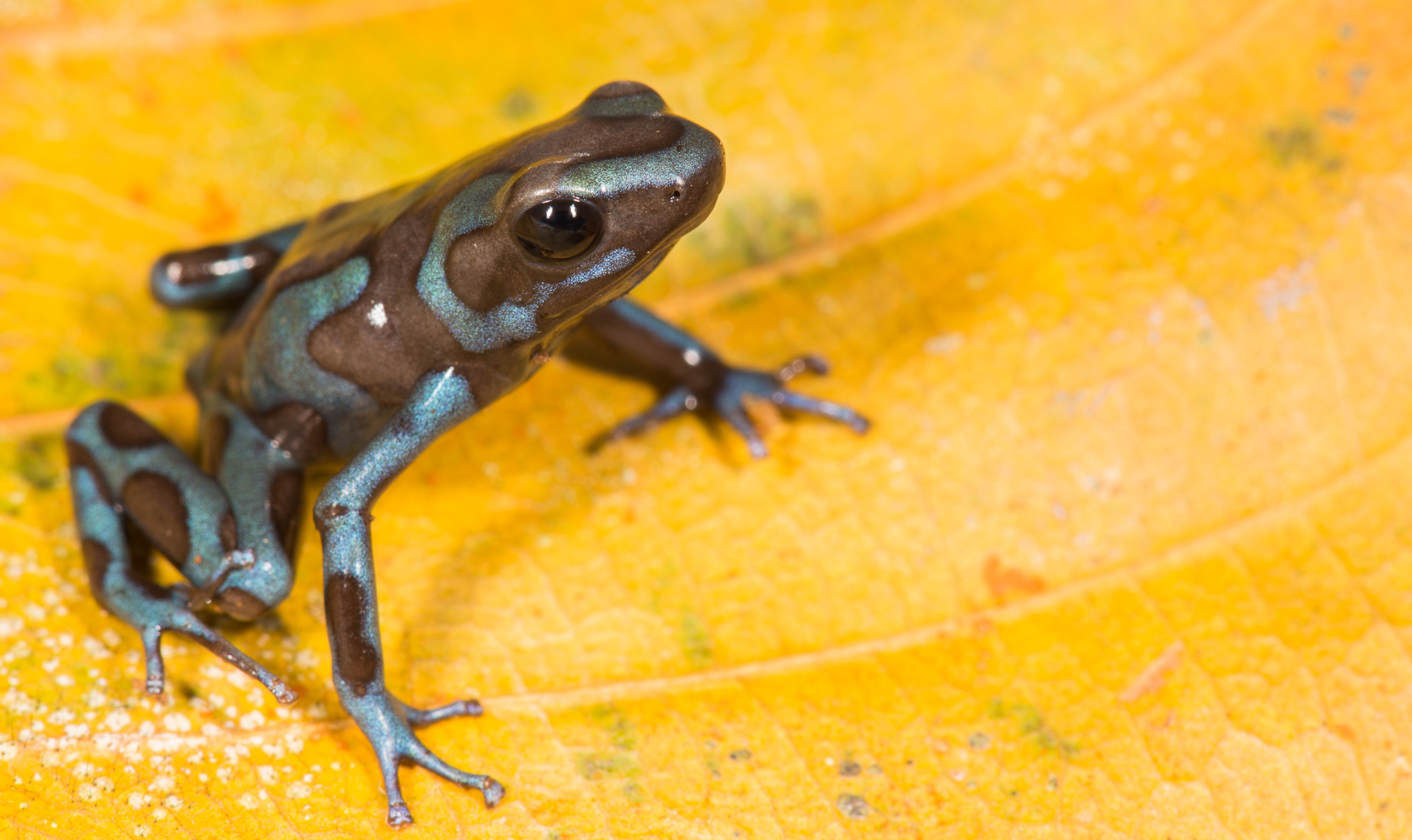Panama has one of the highest concentrations of species on the planet (source). This tiny country harbors as many bird species as North America, about 10 times the number of tree species, a huge diversity of amphibians and reptiles and so on. This ecological jewel is the result of geology and geography. Through tectonics and volcanism, Panama rose from the sea about 3 million years ago, connecting two great continents and allowing the mixing of species from North and South America that dispersed across this narrow land bridge.
Cocobolo Nature Reserve’s location in Panama is key to its diversity and conservation importance: at the narrowest of the Mesoamerican Biological Corridor (about 30 kilometres from the Pacific Ocean and 26 kilometres from the Caribbean Sea), with a significant elevational gradient allowing both lowland and cloud forest species to thrive.
A rich and understudied vegetation
From the crystal-clear waters of Rio Mamoni to the continental ridge, the reserve is covered by mosaic of ecosystems: the anthropogenic grasslands and lowland secondary forests found in the low elevations area of the reserve quickly give way to lush riparian forests and primary cloud forests teeming with vines and epiphytes. Unfortunately, most of the species of plants found in Cocobolo haven’t been identified yet and there’s a crucial need to conduct vegetation surveys and to accurately map and characterize the different vegetation types encountered in and around the reserve.
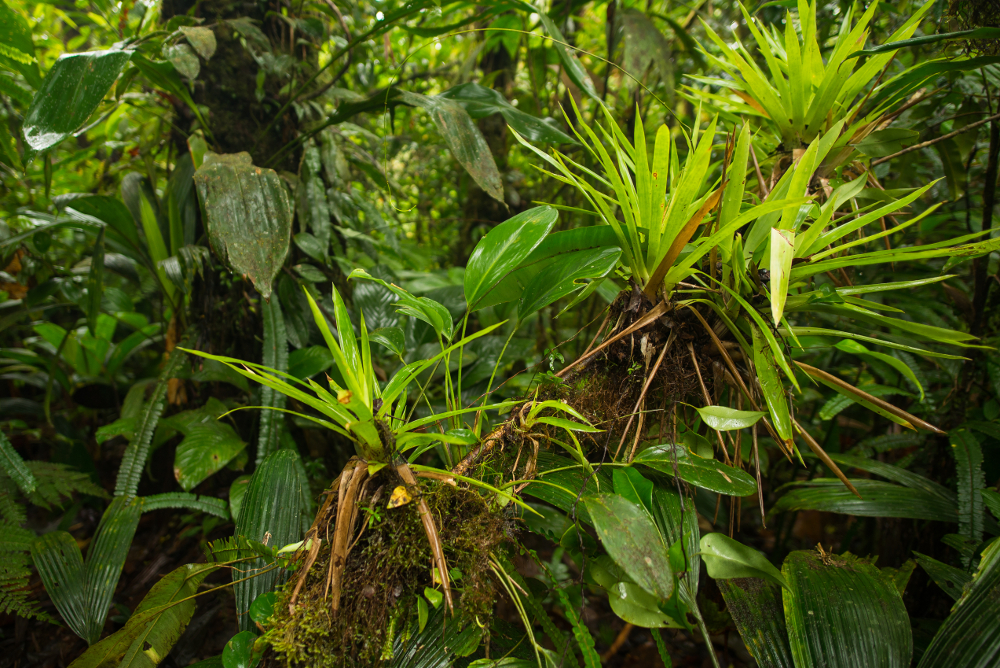
From the largest wild cats to the smallest ants, a sanctuary for all animals
After a decade of research, biologists working in Cocobolo Nature Reserve have accumulated a wealth of knowledge about its charismatic fauna. Beside opportunistic observations during jungle treks and daily bird watching, we have been conducting regular animal surveys using camera traps capturing elusive or nocturnal animals in the most remote places, capturing and releasing birds and bats using mist nets and also relying on hi-tech identification techniques such as bio-acoustics (recording the echolocation sounds produced by bats). This has allowed us to continuously improve our knowledge of Cocobolo’s fauna and to better understand the distribution and behavior of the animals roaming these forests.

There are currently 91 species of mammals recorded in Cocobolo Nature Reserve that includes 53 species of bats (our species checklists can be found at the bottom of this page). Due to its strategic location near Naganá Wilderness and Chagres National Park, at the narrowest of the Mesoamerican biological corridor, our reserve is part of the hunting territory of jaguars and is home to pumas, ocelots, margays and jaguarundi. These wild cats feed on a wide range of species, including peccaries, tapirs, armadillos and deer, all present in Cocobolo. Three-toed sloths, tamarin and howler monkeys are observed daily around the field station, while spider and capuchin monkeys are encountered deeper into the forest.
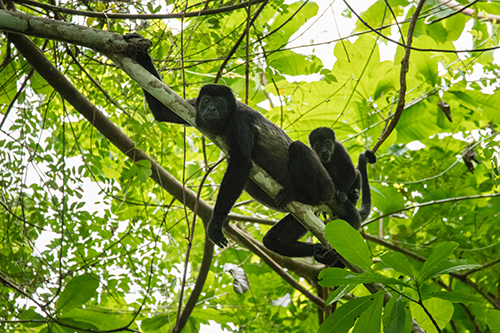
Birds represent the largest group of vertebrates currently listed in the reserve, with at least 400 species of birds recorded so far (our species checklist can be found at the bottom of this page). This is partly due to the increase effort in collecting ornithological data through daily bird watching walks, mist-netting and regular surveys conducted by our experts. Great Curassows, Ground cuckoos, King Vultures, 16 species of hawks and eagles, 20 species of hummingbirds, seven species of owls, five species of kingfishers and five species of toucans and toucanets.
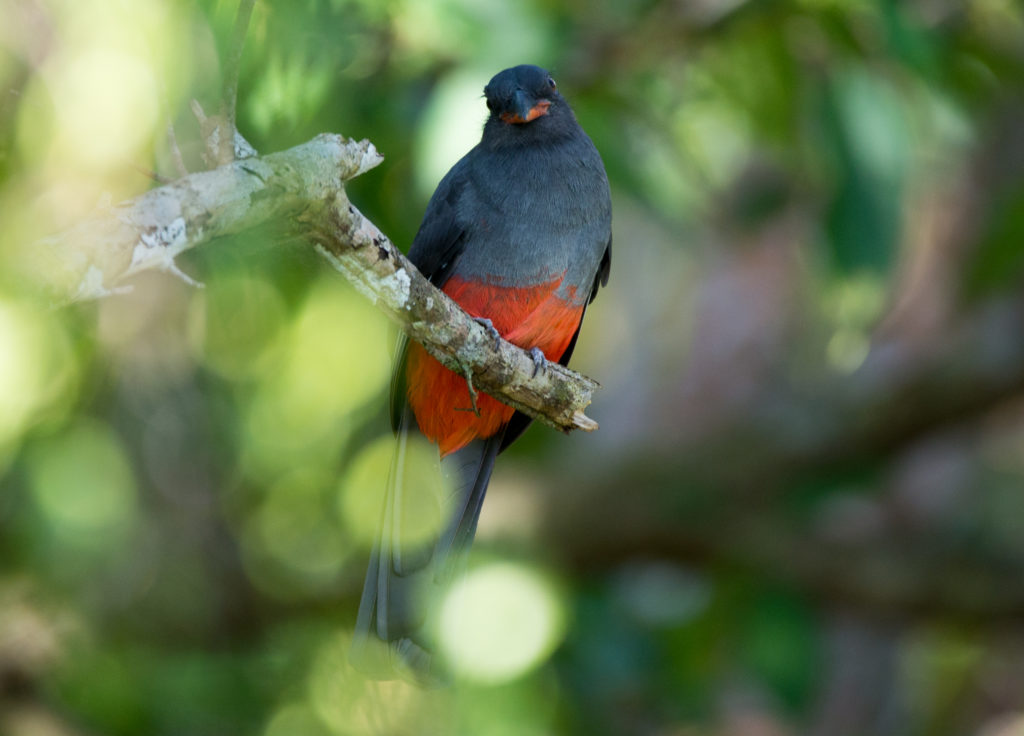
Less popular but equally fascinating, reptiles are well represented in Cocobolo, with 62 species of reptiles recorded so far. No less than 33 species of snakes, 11 iguanas, 8 lizards, 7 geckos, a turtle and caiman are found at the reserve. As recently as February 2017, we even added a rare species of Amphisbaenia, a legless ‘worm lizard’. Our species checklist can be found at the bottom of this page and are also found in Twan Leenders’ 2017 Herpetology Guide to Cocobolo Nature Reserve.

Last vertebrates but not least, there are at least 51 species of amphibians recorded in Cocobolo, with 45 frogs, five salamanders and one caecilian species. Among these frogs, the stunning but endangered Harlequin Toad (Atelopus limosus) is our flagship species. While most of them were wiped out by the chytrid fungus over the last decade in the Rio Mamoni Valley, Cocobolo Nature Reserve is proud to be home a healthy breeding population of Harlequin Toads. Our research team composed of herpetologists Alex Shepack, Abel Batista and Twan Leenders together with CREA’s founder Michael Roy, are monitoring this population and conducting research on them. To learn about our other amphibians, check Twan’s 2017 guide to the herps of Cocobolo or download our species checklist at the bottom of this page.
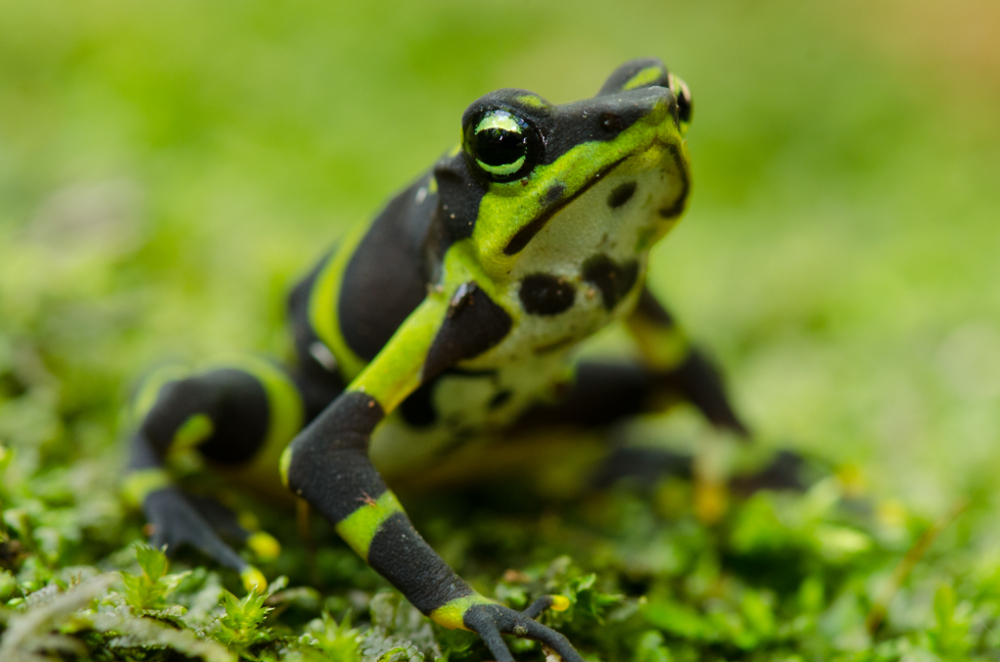
And beside all these well-known animals, Cocobolo is likely home to thousands of species of invertebrates: insects, arachnids, mollusks and poorly studied worms! This smaller majority likely represent 80% of the animal species of the reserve but very little is known about them. A visit to Cocobolo Field Station is enough to realize how omnipresent they are, with a large colony of leaf-cutter ants, the fearsome bullet ants and dozens of species of bees, wasps, dragonflies, damselflies around our gardens. The list of arthropods of Cocobolo is extremely long but we’ll try to list as many of them as possible in 2017.
Citizen Science, Crowdsourcing and Social Media
If you’d like to be kept informed of our research on the biodiversity of Cocobolo, there are many ways:
- iNaturalist – work in progress! Help us identify species we photographed and add your own observations!
- eBird – also in progress! We’re just starting putting our daily bird records – must for birders!
- Facebook – we regularly share pictures and videos straight from the field on our page, check us out!
- Instagram – you can tag us at @CocoboloNature or use the hashtag #CocoboloNatureReserve
- Twitter -you can tag us at @CocoboloNature or use the hashtag #CocoboloNatureReserve
we will soon feed our species lists into Wikipedia.
Species lists
Interested in the raw numbers? Here is an Excel spreadsheet with our current list of vertebrates:
- 91 mammals
- 382 birds
- 62 reptiles
- 51 amphibians
Seen something in Cocobolo that is not on these lists? Let us know! We’re adding new species every month!
See our iNaturalist collection:
